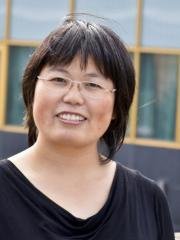SEK 51.6 million for childhood cancer research at Karolinska Institutet
The Swedish Childhood Cancer Fund’s largest research grant of the year has been awarded. A total of SEK 146 million will be distributed, a new record in the fight against childhood cancer. SEK 51.6 million of this will go towards research at Karolinska Institutet.

In total, the Swedish Childhood Cancer Fund will distribute SEK 146 million to 100 researchers. In Stockholm, researchers at Karolinska Institutet, Karolinska University Hospital and Stockholm University will receive SEK 57.6 million. One of these researchers is Hong Qian from the Department of Medicine, Huddinge, KI. Her research aims to find new treatment methods for acute myeloid leukaemia (AML), a form of blood cancer.
The prognosis of AML has improved in recent years, thanks to better diagnosis and increasingly effective treatment, yet around 20 percent of affected children will still die. Relapse and drug resistance are the largest obstacles to curing the disease. Relapse occurs due to treatments failing to kill all the leukaemia-initiating stem cells. The challenge for researchers is therefore to determine what happens when the stem cells hide in the bone marrow.
“We’re trying to understand how the various cells in the bone marrow structure communicate with each other and how this affects the development of AML. The goal will then be to block the signals which protect the leukaemia-initiating stem cells from chemotherapy,” explains Hong Qian in a press release from the Swedish Childhood Cancer Fund.
She will receive SEK 3 million over three years from the Swedish Childhood Cancer Fund.
Among other things, the researchers will use the Nobel Prize-winning CRISPR-Cas9 genome editing tool and transplantation in order to create new treatments. The hope is to find new and more targeted treatments for AML.
“I am incredibly grateful for the support from the Swedish Childhood Cancer Fund. We will continue working hard to find solutions which enable us to prevent leukaemia-initiating stem cells from being able to hide. I am hopeful that, in the future, we will be able to help children with AML in a completely new way,” says Hong Qian.
